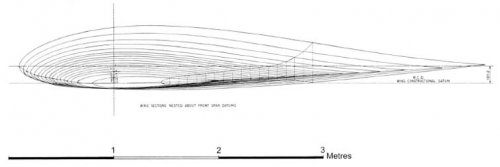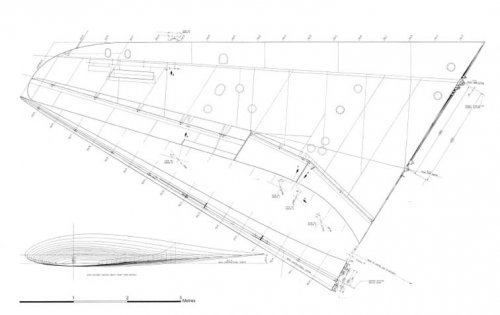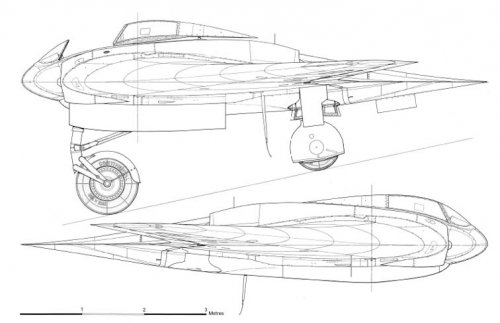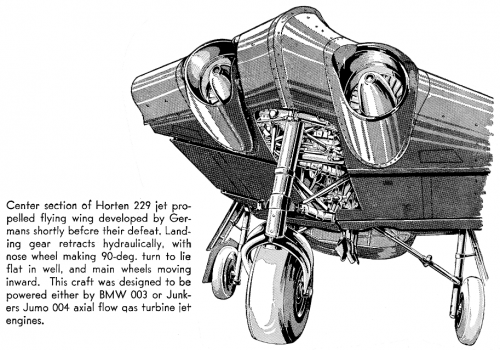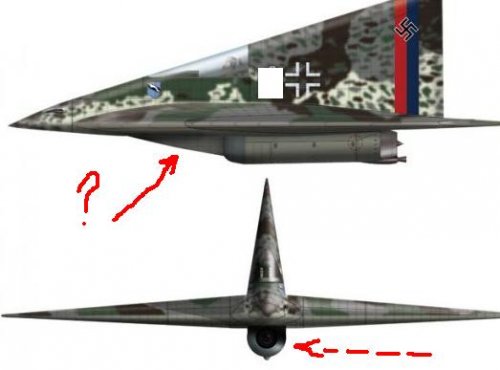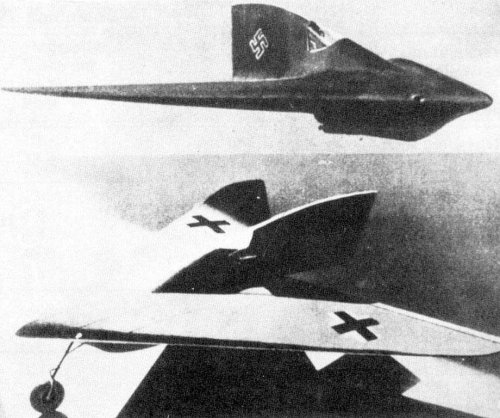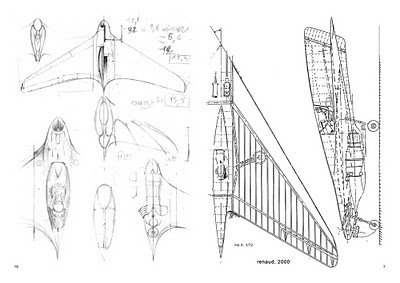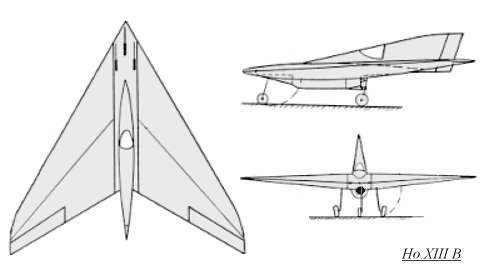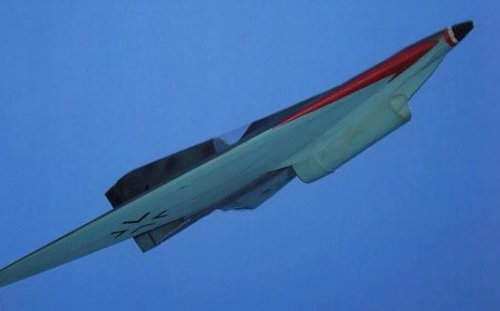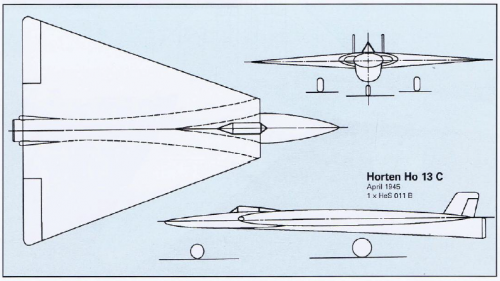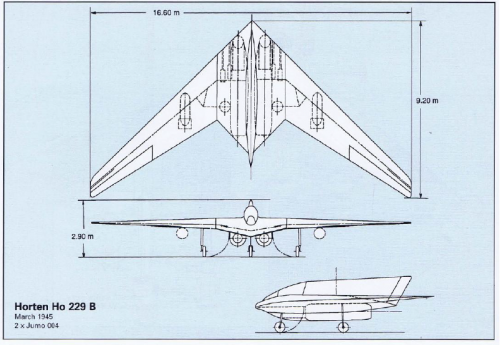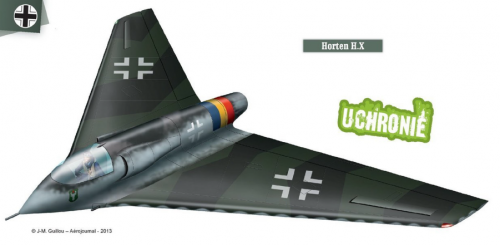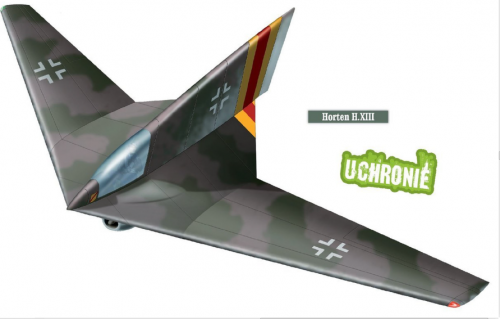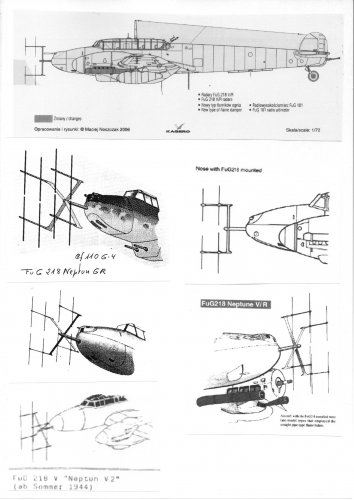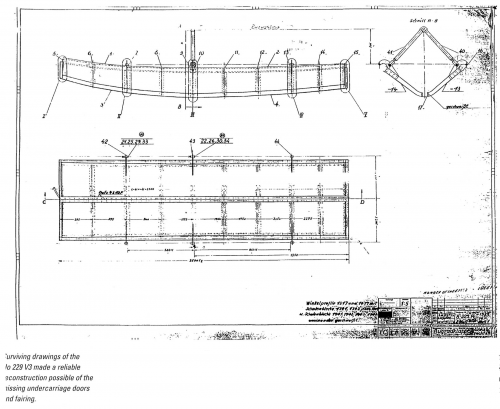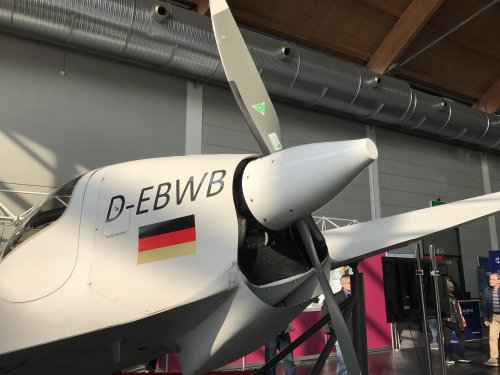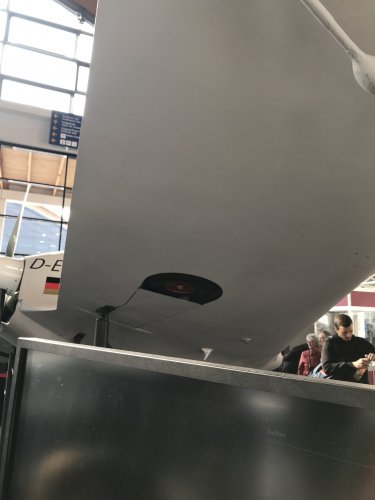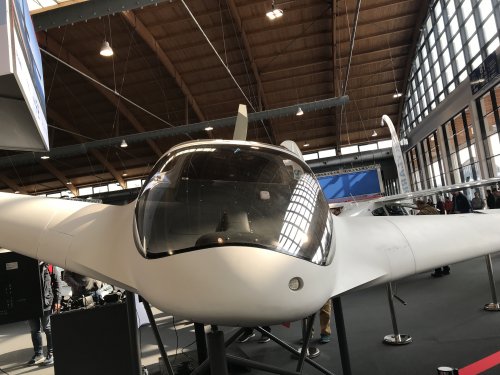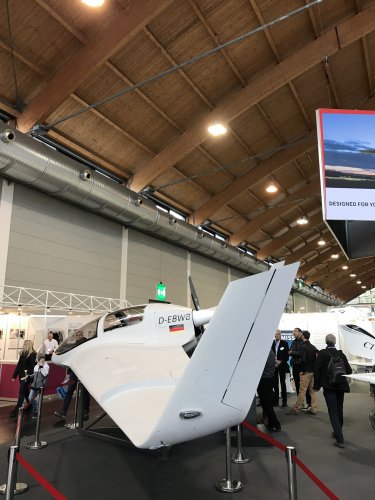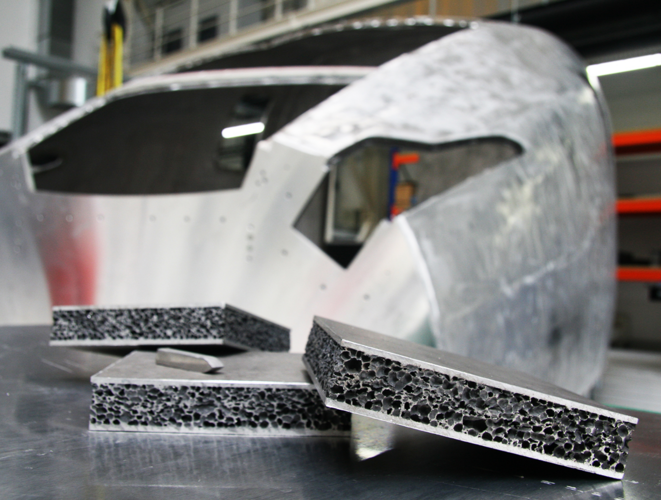You are using an out of date browser. It may not display this or other websites correctly.
You should upgrade or use an alternative browser.
You should upgrade or use an alternative browser.
Horten Jet Aircraft Projects
- Thread starter Justo Miranda
- Start date
Arthur L. Bentley
blackkite
Don't laugh, don't cry, don't even curse, but.....
- Joined
- 31 May 2007
- Messages
- 8,819
- Reaction score
- 7,715
Thanks a lot Justo-san.Justo Miranda said:Arthur L. Bentley
I found these drawings in Japanese internet site. ;D
- Joined
- 9 October 2009
- Messages
- 21,956
- Reaction score
- 13,597

The WW2 flying wing decades ahead of its time
In the last months of World War Two, Nazi Germany tested an experimental fighter more spaceship than aircraft. Only now are we realising how inspired it was, writes Stephen Dowling.
blackkite
Don't laugh, don't cry, don't even curse, but.....
- Joined
- 31 May 2007
- Messages
- 8,819
- Reaction score
- 7,715
- Joined
- 28 October 2006
- Messages
- 1,004
- Reaction score
- 118
Vladimir said:Hi, i have questions about this Horten concept. It's super Flitzer art but i dont understand what is this:
Hi, with regard to my illustration: Its an oversight on my part. On the front head-on view I omitted to include the 'vane'. My fault.
- Joined
- 28 October 2006
- Messages
- 1,004
- Reaction score
- 118
Vladimir said:Ok, maby Justo post some info? It will be great!
For wot did You thinks that "splitter" serve for? I think it just not needed at all
Sorry for the exceedingly late response. My original iMac died around the time of the question and it is only now I'm suitably kitted out again.
As for the question: I'm not sure but as it was on the reference I used I kept it. I'll chase up my refs. It was a long time ago but will try and find them/it.
sgeorges4 said:Hi!What is the radar dragon selected on their horten 229 B?
FuG 218 Neptun
Attachments
- Joined
- 28 October 2006
- Messages
- 1,004
- Reaction score
- 118
Flitzer said:Vladimir said:Ok, maby Justo post some info? It will be great!
For wot did You thinks that "splitter" serve for? I think it just not needed at all
Sorry for the exceedingly late response. My original iMac died around the time of the question and it is only now I'm suitably kitted out again.
As for the question: I'm not sure but as it was on the reference I used I kept it. I'll chase up my refs. It was a long time ago but will try and find them/it.
Reference used was from:
Jet Planes of the Third Reich. The Secret Projects.
By Manfred Griehl.
Page 179.
The illustration clearly shows a splitter like item on the side view, but not on the front. I now think it might be 'two' fence vanes, one on each side of the intake forming a scoop as a means of focusing air into the engine.
Peter
RavenOne
ACCESS: Top Secret
- Joined
- 18 June 2008
- Messages
- 1,003
- Reaction score
- 2,675
I am attending Aero Expo 2019 Friedrichshafen this week so here are my photos of Horton two seats ultra light
Cheers
Cheers
Attachments
thjakits
ACCESS: Restricted
- Joined
- 2 August 2019
- Messages
- 4
- Reaction score
- 1
Beautiful Machine!!
BUT - arguably - NOT a Flying Wing anymore, at least not a "Horten typical - PURE Wing".
I'd rather call it a BWB (Blended-Wing-Body) - at least visually - not unlike the "Atlantica"from Wingco - http://www.wingco.com/
Cheers,
thjakits
BUT - arguably - NOT a Flying Wing anymore, at least not a "Horten typical - PURE Wing".
I'd rather call it a BWB (Blended-Wing-Body) - at least visually - not unlike the "Atlantica"from Wingco - http://www.wingco.com/
Cheers,
thjakits
sgeorges4
I really should change my personal text
- Joined
- 8 October 2017
- Messages
- 665
- Reaction score
- 334
any missile considered on the horten 229? Weird choice from dragon to include henschel 298 inside the ho 229 B box; https://www.super-hobby.com/products/Ho229B-Nachtjager.html
Also interesting video on the idea that horten 229 is ""stealth""
View: https://youtu.be/NSrszi6ivyM
Also interesting video on the idea that horten 229 is ""stealth""
any missile considered on the horten 229? Weird choice from dragon to include henschel 298 inside the ho 229 B box; https://www.super-hobby.com/products/Ho229B-Nachtjager.html
Also interesting video on the idea that horten 229 is ""stealth""
View: https://youtu.be/NSrszi6ivyM
I believe that the stealth idea has been debunked. But it was still being considered when I saw the Ho/Go 229 at the NASM Silver Hill facility some years ago. The fact that vertical tails were considered a problem for stealth in the 80's and '90s combined with the knowledge that the Germans experimented with glue- and rubber-based radar absorbent material on U-Boat snorkels made them take a closer look at the plywood, paint, and fillers on the Horten. But it proved to be just plywood, paint, and filler as near as I know. The steel-tube center structure and the engines would have showed up nicely on radar.
- Joined
- 9 October 2009
- Messages
- 21,956
- Reaction score
- 13,597

Gotha Go 229A-0: Resting places (XLIX).
Horten’s only surviving Gotha-built Ho IX at the Smithsonian Institution’s Paul E. Garber Restoration Facility a few years ago. The sorry looking V3 prototype is now at the Institution&…
- Joined
- 11 June 2014
- Messages
- 1,541
- Reaction score
- 2,899
any missile considered on the horten 229? Weird choice from dragon to include henschel 298 inside the ho 229 B box; https://www.super-hobby.com/products/Ho229B-Nachtjager.html
Also interesting video on the idea that horten 229 is ""stealth""
View: https://youtu.be/NSrszi6ivyM
I believe that the stealth idea has been debunked. But it was still being considered when I saw the Ho/Go 229 at the NASM Silver Hill facility some years ago. The fact that vertical tails were considered a problem for stealth in the 80's and '90s combined with the knowledge that the Germans experimented with glue- and rubber-based radar absorbent material on U-Boat snorkels made them take a closer look at the plywood, paint, and fillers on the Horten. But it proved to be just plywood, paint, and filler as near as I know. The steel-tube center structure and the engines would have showed up nicely on radar.
I think I can at least cast some doubt on the debunking. In September 1944, Professor Dr Kurt Krüger, director of the Institut für Luftfahrtgeräte der Technischen Akademie der Luftwaffe at Berlin-Gatow and the Messtechnisches Institut, Königshofen im Grabfeld, produced a report entitled Reflexion elektromagnetischer Wellen an Flugzeugbaustoffen - Reflection of electromagnetic waves on aircraft building materials.
The report summary says: "The task is to camouflage planes and other flying objects against exposure to radio measuring devices, i.e. to make the reflection amplitude of the aircraft as small as possible. In the present report, it is proposed to solve this problem by preferably building the aircraft out of electrically permeable substances and by covering those components that must be metallic in nature (such as the engine, landing gear, etc.) with electrical absorbing substances."
The report notes that "through the mediation of the OKL and their own efforts, materials such as Tronal, Atex, plywood and a combination of several building materials were procured and measured by various companies". One of those companies was Gothaer Waggonfabrik, which at the time was engaged in building the Horten 8-229 prototypes. There is a diagram of a generic twin-engine flying wing aircraft included in the report with the caption "Nurfluegler mit schluckstoffverkleideten (schraffiert gezeichnetan) metallischen Bauteilen." - "Flying-wing aircraft with metallic components clad with absorption material (shown hatched)." The hatched area covers where the engines would be, the cockpit and the undercarriage.
Evidently Gothaer was trying different sets of layered material to various thicknesses which included plywood, Moltopren (a sort of plastic foam, I think), cellular rubber (Hartzellkautsch) and what is described as Holzgitter - wooden lattice.
This report doesn't overtly say 'there was a plan to make the 8-229 out of radar absorbing materials', but it does clearly show that radar absorbing materials were being considered for flying wing types and that Gotha was involved in testing those materials during the same time period when it was building 8-229 type flying wings. The Hortens were working closely with Gotha and would almost certainly have been aware of Krüger's work. Of course, Krüger, his colleague Dr H. G. Grimm (who was managing the materials testing) and the institutes were left out when Reimar Horten mentioned the radar absorbing material to David Myhra during his interview.
Krüger himself was evidently killed before the end of the war, according to a CIOS evaluation report I have. This says that development of his absorbent materials was at an early stage, which may well mean that they hadn't yet been applied to an actual aircraft.
So although Horten wasn't necessarily telling the whole truth, I don't think he was really lying either.
Last edited:
Thank you for this information.
IG Farben was involved in the manufacture of Moltopren, described by the B.I.O.S. as an "expanded plastic" and part of a number of different Moltoprens. They report that the production version had the trade name Troporit M.
IG Farben was involved in the manufacture of Moltopren, described by the B.I.O.S. as an "expanded plastic" and part of a number of different Moltoprens. They report that the production version had the trade name Troporit M.
- Joined
- 11 June 2014
- Messages
- 1,541
- Reaction score
- 2,899
Thank you for this information.
IG Farben was involved in the manufacture of Moltopren, described by the B.I.O.S. as an "expanded plastic" and part of a number of different Moltoprens. They report that the production version had the trade name Troporit M.
According to the web, Moltopren(R) appears to be this stuff:
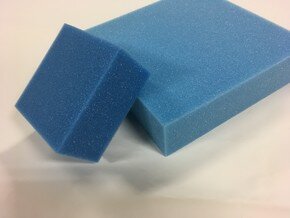
- Joined
- 19 July 2016
- Messages
- 4,274
- Reaction score
- 3,457
A type/variety of plastic foam?
On a related note, I wonder how the test would have gone with the British Gordon Aerolite if used to construct an aircraft?
On a related note, I wonder how the test would have gone with the British Gordon Aerolite if used to construct an aircraft?
Last edited:
T. A. Gardner
ACCESS: Top Secret
- Joined
- 18 February 2021
- Messages
- 1,149
- Reaction score
- 2,017
larger wheels would allow the plane to operate from airfields like grass ones and ones that were damaged and repaired with compacted earth rather than concrete or asphalt. Given that Germany in 1944 - 45 was getting the snot bombed out of it that made quite a bit of sense.can anyone explain the logic behing this humungous nosewheel?
especially as rubber was a scarce material in ww2 germany
- Joined
- 27 May 2008
- Messages
- 1,178
- Reaction score
- 2,483
can anyone explain the logic behing this humungous nosewheel?
especially as rubber was a scarce material in ww2 germany
The mass and vertical load acting on the wheel determine its size;- the larger these are the larger wheel.
A flying wing inherently had a cg close to the middle of the aeroplane which means half of the aircraft’s mass is over the Nose wheel and half over the two Mains wheels. Furthermore in order to allow the aircraft to raise its nose to take off/land the main wheels have to be located aftwards which again decreases the main wheel loads and therefore increases the nose wheel loads/size. In addition to the mass there’s the wheel braking load which is reacted as a moment on the Nose-wheel as an additional vertical load albeit at a small moment arm. So a flying wing nose wheel takes maybe three to four times the load of its main wheels so is a much bigger size.
A conventional tube and wing aeroplane has the main wheels very close to the cg so see maybe 90% of the mass. Likewise the Nose wheel reacts the braking moment as a vertical load but at a sizeable moment arm. This means the nose wheel will be a third to a quarter of the load of the main wheels hence are considerably smaller.
Now the foam used inside underwater ROVs is even stronger...has anyone thought to use those in aerospace?Thank you for this information.
IG Farben was involved in the manufacture of Moltopren, described by the B.I.O.S. as an "expanded plastic" and part of a number of different Moltoprens. They report that the production version had the trade name Troporit M.
According to the web, Moltopren(R) appears to be this stuff:
View attachment 664020
- Joined
- 8 March 2009
- Messages
- 1,056
- Reaction score
- 1,298
Now the foam used inside underwater ROVs is even stronger...has anyone thought to use those in aerospace?Thank you for this information.
IG Farben was involved in the manufacture of Moltopren, described by the B.I.O.S. as an "expanded plastic" and part of a number of different Moltoprens. They report that the production version had the trade name Troporit M.
According to the web, Moltopren(R) appears to be this stuff:
View attachment 664020
Pretty much every aircraft made of fiberglass and lots of carbon fiber birds.
T. A. Gardner
ACCESS: Top Secret
- Joined
- 18 February 2021
- Messages
- 1,149
- Reaction score
- 2,017
Similar threads
-
-
Stealth Warplanes of the Luftwaffe-Prototypes and Projects 1936-1946-War Secrets-Volume Four
- Started by Justo Miranda
- Replies: 2
-
-
-
W“Invisible” Aircraft (Stealth: The Early Years)
- Started by Wingknut
- Replies: 96

